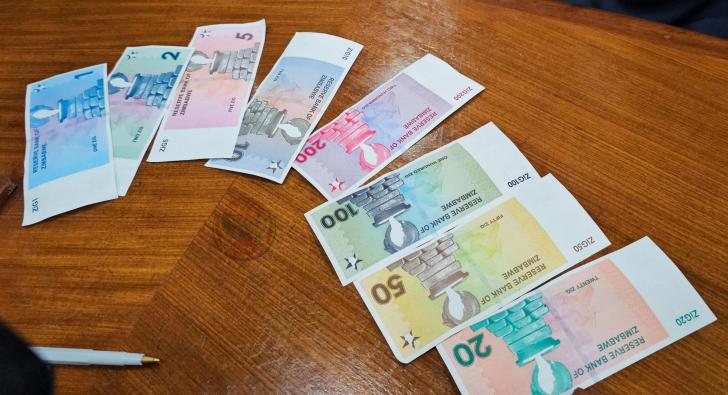News / National
ZiG registers gradual growth in transactions
22 Aug 2024 at 06:04hrs |
0 Views

Zimbabwe has seen significant growth in the use of the Zimbabwe Gold (ZiG) currency in domestic transactions since its introduction in April 2024.
According to Finance, Economic Development, and Investment Promotion permanent secretary George Guvamatanga, ZiG now accounts for 39% of domestic transactions, up from 30% in April. The remaining 61% of transactions are conducted primarily in US dollars.
This increase in ZiG usage indicates growing acceptance of the domestic currency, which was introduced to replace the Zimbabwe dollar due to its volatility.
The government has implemented various measures to support ZiG, including tight monetary and fiscal policies and requiring import duties on certain luxury goods to be paid in ZiG. The goal is to promote its demand and use as part of a phased de-dollarization plan, expected to last until at least 2030.
Additionally, businesses generating more than half of their revenue in hard currency are now required to pay taxes on a 50-50 basis between ZiG and US dollars.
Efforts are also underway to increase the circulation of physical ZiG notes, particularly in rural areas, although most transactions currently occur electronically.
Guvamatanga emphasized that while ZiG is circulating primarily in electronic form, there has been a marked increase in its use and acceptance. He also reassured that the government has no plans to interfere with free funds from remittances, which will continue to be treated as the recipients' funds to use as they wish.
According to Finance, Economic Development, and Investment Promotion permanent secretary George Guvamatanga, ZiG now accounts for 39% of domestic transactions, up from 30% in April. The remaining 61% of transactions are conducted primarily in US dollars.
This increase in ZiG usage indicates growing acceptance of the domestic currency, which was introduced to replace the Zimbabwe dollar due to its volatility.
The government has implemented various measures to support ZiG, including tight monetary and fiscal policies and requiring import duties on certain luxury goods to be paid in ZiG. The goal is to promote its demand and use as part of a phased de-dollarization plan, expected to last until at least 2030.
Additionally, businesses generating more than half of their revenue in hard currency are now required to pay taxes on a 50-50 basis between ZiG and US dollars.
Efforts are also underway to increase the circulation of physical ZiG notes, particularly in rural areas, although most transactions currently occur electronically.
Guvamatanga emphasized that while ZiG is circulating primarily in electronic form, there has been a marked increase in its use and acceptance. He also reassured that the government has no plans to interfere with free funds from remittances, which will continue to be treated as the recipients' funds to use as they wish.
Source - The Herald
Join the discussion
Loading comments…





















